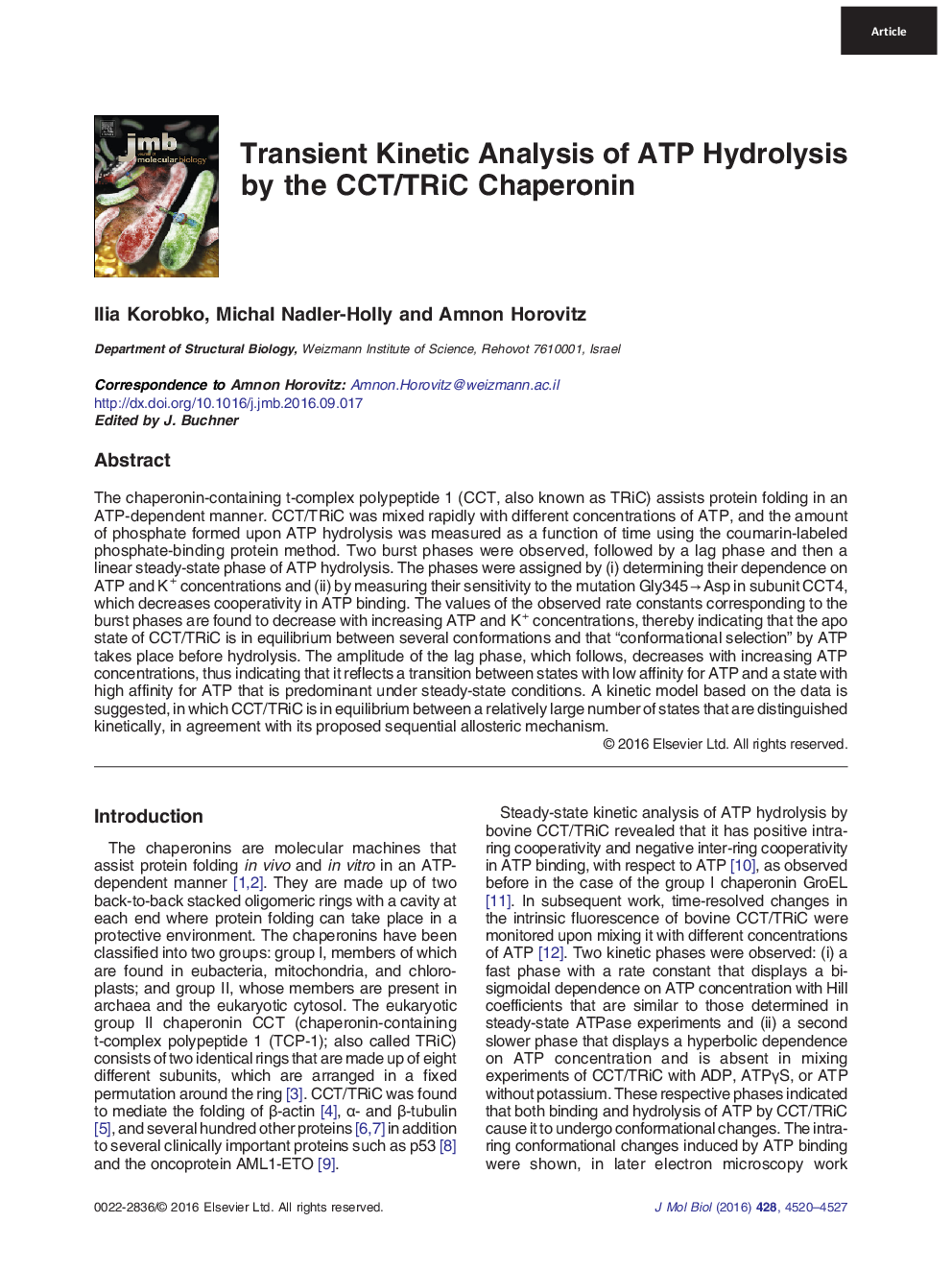| کد مقاله | کد نشریه | سال انتشار | مقاله انگلیسی | نسخه تمام متن |
|---|---|---|---|---|
| 5532893 | 1402085 | 2016 | 8 صفحه PDF | دانلود رایگان |

- CCT/TRiC's ATPase activity has two bursts, a lag and then linear steady-state phases.
- The burst phases of ATP hydrolysis by CCT/TRiC involve “conformational selection”.
- The lag phase reflects a switch of CCT/TRiC from a low to high ATP affinity state.
- The apo state of CCT/TRiC is found to be in at least five different conformations.
The chaperonin-containing t-complex polypeptide 1 (CCT, also known as TRiC) assists protein folding in an ATP-dependent manner. CCT/TRiC was mixed rapidly with different concentrations of ATP, and the amount of phosphate formed upon ATP hydrolysis was measured as a function of time using the coumarin-labeled phosphate-binding protein method. Two burst phases were observed, followed by a lag phase and then a linear steady-state phase of ATP hydrolysis. The phases were assigned by (i) determining their dependence on ATP and K+ concentrations and (ii) by measuring their sensitivity to the mutation Gly345 â Asp in subunit CCT4, which decreases cooperativity in ATP binding. The values of the observed rate constants corresponding to the burst phases are found to decrease with increasing ATP and K+ concentrations, thereby indicating that the apo state of CCT/TRiC is in equilibrium between several conformations and that “conformational selection” by ATP takes place before hydrolysis. The amplitude of the lag phase, which follows, decreases with increasing ATP concentrations, thus indicating that it reflects a transition between states with low affinity for ATP and a state with high affinity for ATP that is predominant under steady-state conditions. A kinetic model based on the data is suggested, in which CCT/TRiC is in equilibrium between a relatively large number of states that are distinguished kinetically, in agreement with its proposed sequential allosteric mechanism.
Graphical Abstract93
Journal: Journal of Molecular Biology - Volume 428, Issue 22, 6 November 2016, Pages 4520-4527